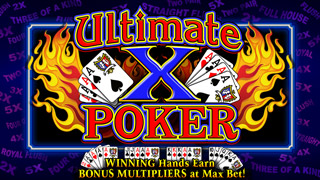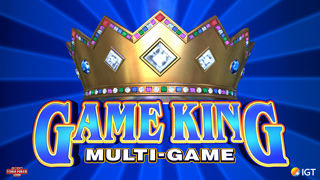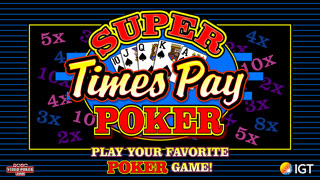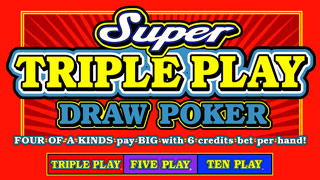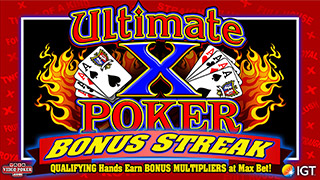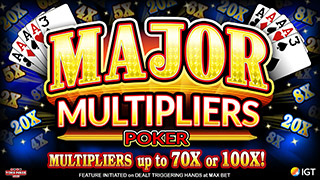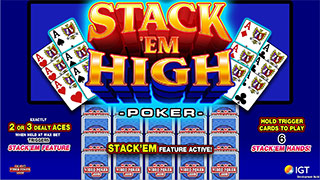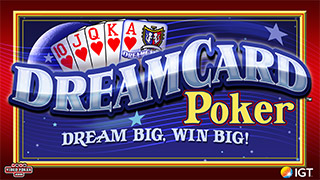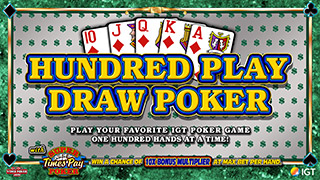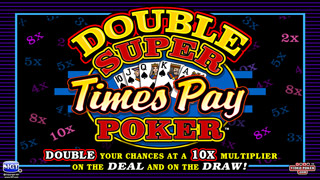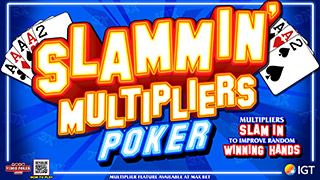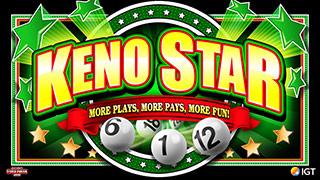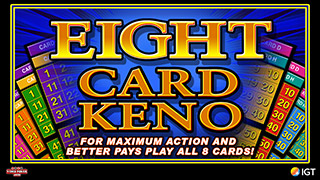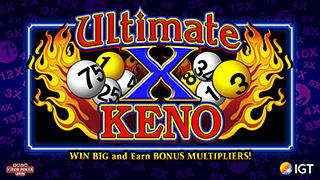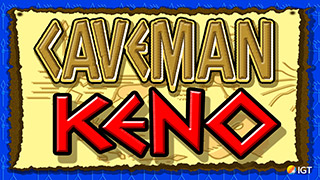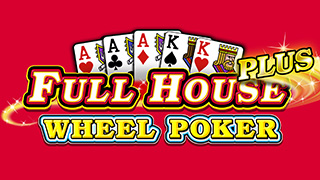What Would It Take???
-
New2vp
- Video Poker Master
- Posts: 1879
- Joined: Mon Sep 11, 2006 4:02 am
Re: What Would It Take???
Post unable to migrate
-
moneyla
- Forum Rookie
- Posts: 46
- Joined: Thu Jun 02, 2011 3:02 am
The great part (as I see it) about this utility is that people will be able to share exact results done in an exact way and then others will be able to replicate the experiment, a condition for good science.~FK
Unfortunately I don't think "good science" will come out of this. The RNG is not a fixed factor and because it is a variable over which no one has control there can only be the results of individuals that you could examine on their own Even two machines of the same game, same denomination, can't be a valid comparison because the RNGs can be throwing out different cards at the same second and there is no way to measure that. Nor can you measure the speed at which someone presses the deal or draw buttons which also effects the cards chosen. There is no "science" here but it will be interesting to see what people find. Im still hoping to see the man-bites-dog result.
-
shadowman
- Video Poker Master
- Posts: 3587
- Joined: Mon Oct 23, 2006 5:42 pm
Unfortunately I don't think "good science" will come out of this. The RNG is not a fixed factor and because it is a variable over which no one has control there can only be the results of individuals that you could examine on their own
Even two machines of the same game, same denomination, can't be a valid comparison because the RNGs can be throwing out different cards at the same second and there is no way to measure that. Nor can you measure the speed at which someone presses the deal or draw buttons which also effects the cards chosen.
There is no "science" here but it will be interesting to see what people find. Im still hoping to see the man-bites-dog result.
You need to understand the "science". Results can be compared. The meaning, however, is not quite like you might expect. It's not exact, but that doesn't mean comparisons are impossible.
Even two machines of the same game, same denomination, can't be a valid comparison because the RNGs can be throwing out different cards at the same second and there is no way to measure that. Nor can you measure the speed at which someone presses the deal or draw buttons which also effects the cards chosen.
There is no "science" here but it will be interesting to see what people find. Im still hoping to see the man-bites-dog result.
You need to understand the "science". Results can be compared. The meaning, however, is not quite like you might expect. It's not exact, but that doesn't mean comparisons are impossible.
-
moneyla
- Forum Rookie
- Posts: 46
- Joined: Thu Jun 02, 2011 3:02 am
There is "art" and there is "science." If you want to discuss the "art" of playing video poker then I would accept the various results that video poker players find. But I can't accept it as science. I think the science is that Random Number Generators are random unless you can prove they're not.
-
Frank Kneeland
- VP Veteran
- Posts: 762
- Joined: Wed Feb 02, 2011 6:59 pm
There is "art" and there is "science." If you want to discuss the "art" of playing video poker then I would accept the various results that video poker players find. But I can't accept it as science. I think the science is that Random Number Generators are random unless you can prove they're not.You seem to be alternating between making helpful and not so helpful off topic posts . It's very confusing. Now it appears you're back to thinking I'm trying to prove something, which I'm not. I'm making a utility for people to help them prove for themselves whatever they'd like.In the original post of this thread, and several after it, I asked people not to talk
about their current beliefs and opinions and instead focus on testing
methods, and everyone except for you has followed this. You, on the other
hand, don't seem to be able to refrain from talking about what you
believe...and your suggestions on testing methodology have been thin, to say the least. Above you stated," I think the science is that Random Number Generators are random unless you can prove they're not."You expressed your belief: Which I said not to do in this thread.You didn't offer a method for testing your belief: Which I asked people to do.The whole point of creating this utility is to replace opinion with science, and to replace second hand information with first hand experimentation.So I'll say it one more time: This thread is not a place to discuss whether or not machines are fair and random or what you believe, it is about testing methods.I also have an opinion about RNG's and so far I've had no problem keeping that opinion to myself, out of this thread and out of the utility I'm making.~FK
-
moneyla
- Forum Rookie
- Posts: 46
- Joined: Thu Jun 02, 2011 3:02 am
Frank, don't take things so personally. My comments aren't exclusively about you or what you're doing.
-
Frank Kneeland
- VP Veteran
- Posts: 762
- Joined: Wed Feb 02, 2011 6:59 pm
@New2VPI'm hating the way the Excel Chitest works. Basically if you don't put everything in one gigantic long column it doesn't work.Is there anyway around this limitation?
-
New2vp
- Video Poker Master
- Posts: 1879
- Joined: Mon Sep 11, 2006 4:02 am
Yes, it appears that "CHITEST" requires that the ACTUAL vector of values be in a contiguous row or column and the EXPECTED vector of values be in a contiguous row or column, though it does allow a mixture, so one of these could be in a row while the other one was in a column.Generally, I haven't used the shortcut TEST functions in Excel, but used the functional values provided by CHIINV and CHIDIST directly. That might provide you with the flexibility that you want.Following is an excerpt from a spreadsheet that explains an alternative way to proceed if you calculate the test statistic explicitly rather than relying on the CHITEST function to do that internally. Here I performed a test noting only the ranks of the cards (just counting aces, kings, etc., down to deuces) ignoring the suits, so that this illustration wouldn't be 4 times as long. If you were counting each of the 52 cards, the degrees of freedom would be 51 instead of the 12 in the example.I did include the CHITEST function (green font) to see that it indeed did produce the exact same answer as one gets using CHIDIST and CHIINV (in orange font). Adjacent to some of the cells, I showed the functions that produced the values in nearby cells. If any of this is not clear, let me know.By the way, I got the ACTUAL values from doing a simulation using Excel's RAND() function. I heard a few years ago that Excel's RNG didn't pass as many randomness tests as some others, but I expect it would be reasonably suitable for generating a few thousand random numbers. The first time through, just by luck, I got a test that had more extreme results (in this case, too few 3's is the most striking difference from complete uniformity) than 1 in 13 such tests.One of the things that I would recommend in the case that a randomness test failed in a jurisdiction that required randomness, would be to redo the test a couple more times to gather more evidence against the null hypothesis before taking serious actions such as making any actual charges of cheating to authorities. Once in a while, chance does some funny things. But to combat that, these tests put near-exact numbers on the probability that chance alone could be the cause of observed aberrations.
Actual
Expected
(Act - Exp)^2
Prev/Exp
A
89
96
49
0.510417
K
111
96
225
2.34375
Q
87
96
81
0.84375
J
82
96
196
2.041667
T
112
96
256
2.666667
9
103
96
49
0.510417
8
108
96
144
1.5
7
108
96
144
1.5
6
88
96
64
0.666667
5
105
96
81
0.84375
4
81
96
225
2.34375
3
77
96
361
3.760417
2
97
96
1
0.010417
1248
19.54167
Test-statistic
Sum of column
degrees of
freedom
12
Number of possibilities MINUS one
Critical
Values
0.1
18.54934779
CHIINV(0.1,12)
0.05
21.02606982
CHIINV(0.05,12)
0.01
26.21696731
CHIINV(0.01,12)
0.005
28.29951882
CHIINV(0.005,12)
0.001
32.90949041
CHIINV(0.001,12)
0.0001
39.13440388
CHIINV(0.0001,12)
p-value
0.076268
CHIDIST(19.54167,12)
Interpretation: There is a
7.63%
chance
that you could get this extreme a
result by chance
if the hypothesis of equal
probabilities were true.
0.076268
CHITEST(ACTUAL vector,EXPECTED
vector)
Have a good holiday weekend!
Actual
Expected
(Act - Exp)^2
Prev/Exp
A
89
96
49
0.510417
K
111
96
225
2.34375
Q
87
96
81
0.84375
J
82
96
196
2.041667
T
112
96
256
2.666667
9
103
96
49
0.510417
8
108
96
144
1.5
7
108
96
144
1.5
6
88
96
64
0.666667
5
105
96
81
0.84375
4
81
96
225
2.34375
3
77
96
361
3.760417
2
97
96
1
0.010417
1248
19.54167
Test-statistic
Sum of column
degrees of
freedom
12
Number of possibilities MINUS one
Critical
Values
0.1
18.54934779
CHIINV(0.1,12)
0.05
21.02606982
CHIINV(0.05,12)
0.01
26.21696731
CHIINV(0.01,12)
0.005
28.29951882
CHIINV(0.005,12)
0.001
32.90949041
CHIINV(0.001,12)
0.0001
39.13440388
CHIINV(0.0001,12)
p-value
0.076268
CHIDIST(19.54167,12)
Interpretation: There is a
7.63%
chance
that you could get this extreme a
result by chance
if the hypothesis of equal
probabilities were true.
0.076268
CHITEST(ACTUAL vector,EXPECTED
vector)
Have a good holiday weekend!
-
Frank Kneeland
- VP Veteran
- Posts: 762
- Joined: Wed Feb 02, 2011 6:59 pm
Thanks, New! Yea I think I just program it manually instead of using the built in function. One, I won't have to re-write what I've done so far. Two, it'll be more transparent for people to see what the program is doing.~FK
-
Frank Kneeland
- VP Veteran
- Posts: 762
- Joined: Wed Feb 02, 2011 6:59 pm
@New2VPMy pro gambler friend Larry is a devotee of Bayesian statistics and hates the Chi Squared test. How familiar are you with the Bayesian method for doing randomness testing? I'm not familiar with it at all. If you do know it, could you point me in the right direction for doing it in Excel like you did with the Chitest.Thanks to your help I now have the basic functions up and running using Chi Squared, but I'd like to add the Bayesian method as well if it's easy.



